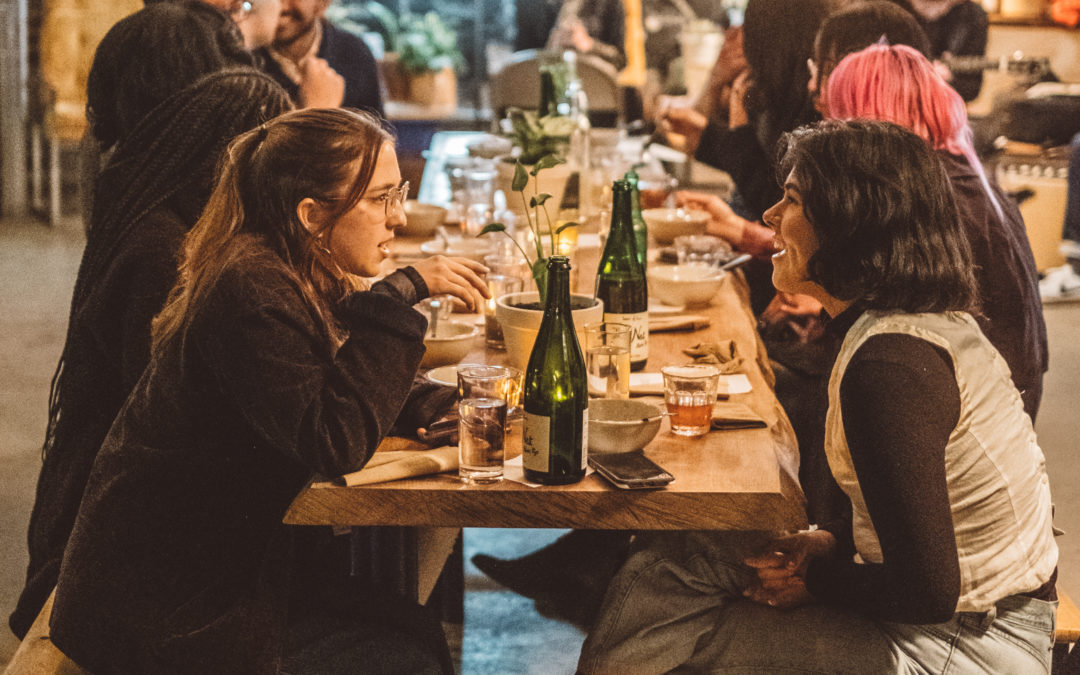IMPACT
Why Social Networks Can’t Compete with Real Life
By
Caroline Cox
– VOL. 8
Zoom fatigue, contactless grocery delivery, FaceTime — it’s natural to feel burned out by virtual life after more than a year and a half of doing so much online. The good news: While we’re not exactly out of the woods yet, we have a deeper appreciation for the art of IRL gathering. That humble backyard barbeque? Sunset drinks on the stoop? We may never take these moments for granted again.
And as vital as our social media relationships have been during this period–offering a lifeline in the form of shared camaraderie, information, and live-streamed dance classes–reports show that while people are leveraging social media platforms like never before, they’re also lonelier than ever. For many of us, there’s a silver lining in realizing just how important in-person and community connection are to our well-being. Going forward, we’ll take steps to ensure these things stay prioritized in our lives.
And of course—it starts with community.

Recently leaked documents show that Facebook has long known its platform hurts sleep, work, relationships, or parenting.
In-person Connection Involves People and Place
Whether you’re meeting up with someone down the hall or across town, in-person connecting doesn’t happen in a vacuum. Often, these meetings involve interacting not just with others, but with our surroundings, too.
The feeling of sharing a coffee at a neighborhood cafe or splitting a bottle of wine on a comfy couch is an experience that simply can’t be recreated in a virtual chat room.
Moreover, patronizing a local business can also help you feel more connected not just with the person you’re meeting, but with your community as well. (Not to mention, patrons are what keep local businesses, well, in business.) As Venn learned in our recent survey of more than 500 renters across the U.S., 63% of respondents feel like it’s important to them to live in a neighborhood where they feel like they belong.

We may be able to use the social platforms for free, but these networks are in the business of selling our attention to advertisers.
In-person Gatherings Are Free from Online Noise
When it comes to social media and elsewhere online, you’re not just interacting with other people. You’ve also got to deal with pop-ups, digital ads, and promoted content.
The result can be jarring, distracting, and it can do a disservice to the connections you’re trying to make. After all, on social networks, it’s not the customer that’s the product — it’s the people using these platforms.
The most effective apps are ones that facilitate in-person meetups, like dating apps. Sure, you can start off with some back-and-forth banter, but the real connection happens when you put down the phones and put in some face time.
With live meetups, you can more easily focus your attention on conversing, not dismissing constant distractions.

Nearly 50% of people said they wished they were more connected to their neighbors.
Interacting with Community Makes Us Feel Secure
As we mentioned above, getting out in your community works like a flower growing roots. It makes us feel more secure in where we live, and it helps remind us that we’re part of something greater than ourselves.
In our survey, 43% of renters said they wish they were more connected to their neighbors.
That’s why our Neighborhood-as-a-Service (or what we call NaaS) offering exists: to help business owners, property owners, and neighbors come together to connect, foster relationships, and feel like they belong.
It’s why we keep providing the space, digitally and physically, for Neighbors to connect, whether it be at a monthly Dig In Dinner or supporting Neighbor organized events like book clubs. It’s these kinds of things that help Neighbors feel like they belong to something special—and real.
More from the Venn Journal







Recent Comments